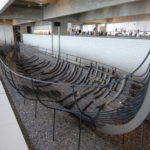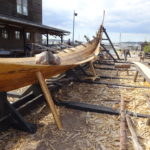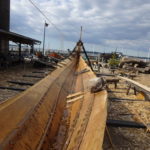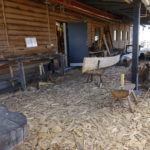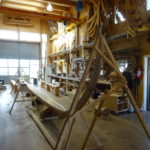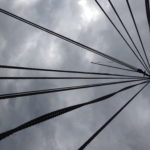 I’ve been to Copenhagen before (see my “Spiraling Upward in Copenhagen“), so on this short visit I decided to head out of town to Roskilde. Only thirty minutes by train, Roskilde could be considered a suburb – the other Copenhagen – but it’s like day and night in comparison.
I’ve been to Copenhagen before (see my “Spiraling Upward in Copenhagen“), so on this short visit I decided to head out of town to Roskilde. Only thirty minutes by train, Roskilde could be considered a suburb – the other Copenhagen – but it’s like day and night in comparison.
Whereas Copenhagen is bustling (my earlier trip included getting trapped by the mass of runners in the annual 26-mile marathon), Roskilde is relaxed and touristy. And yet it has its share of excitement, hosting an annual rock festival on the outskirts of town. That’s rock as in music, not geology, by the way.
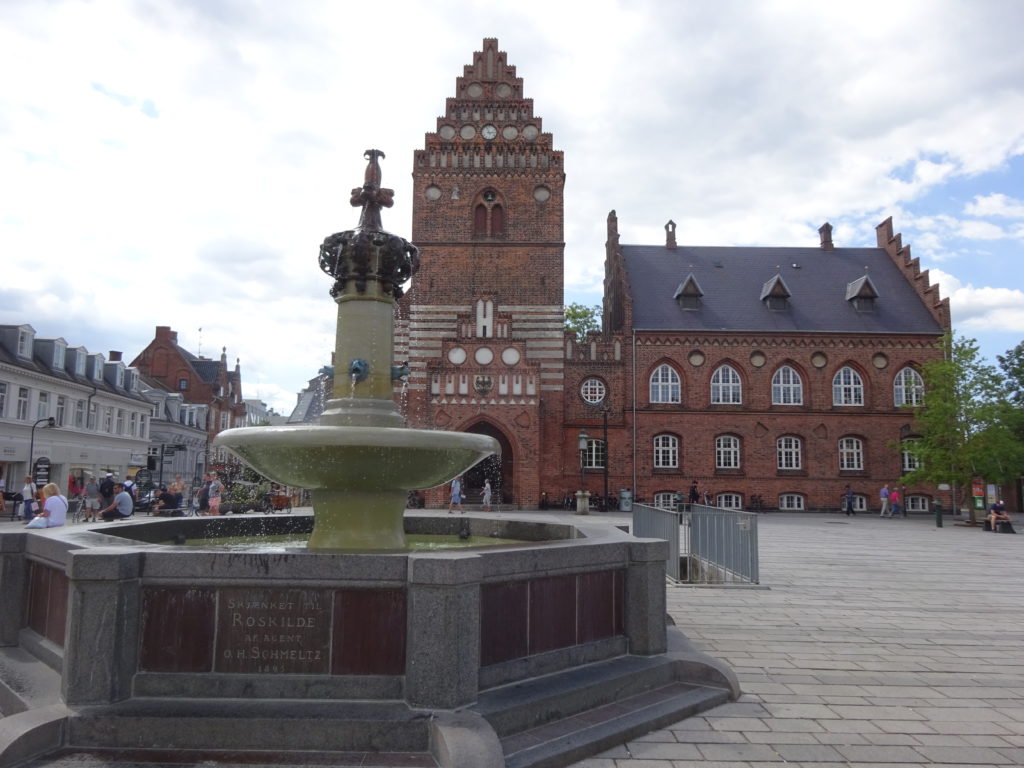
On this day we walked down the main pedestrian street, the kind you should expect in a town whose history goes back to the Viking era. I’m not a shopper, but if you are, you’ll find many stores of local wares and gifts. At the end of the short street is the main square featuring a small fountain and the large former city hall. On the other side of the square is the entrance to the Roskilde Palace, which was more of a weekend house for rest than a working palace.
Next to the palace is the impressive Roskilde cathedral. Built in the 12th and 13th centuries, the Romanesque church (with its Gothic influence) was the first in all of Scandinavia built of brick. Today it attracts thousands of tourists (for a fee) and houses over three dozen royal tombs as the burial site for Danish monarchs. It’s now a UNESCO World Heritage Site.
These are the sort of structures you expect to see in European old towns, but don’t forget to take the pleasant hike downhill through the forested park to the waterfront. Here you’ll find the Viking Ship Museum and Museum Island sitting at the head of the Roskilde Fjord. Inside the museum itself you’ll find the remains of five 11th century Viking ships that were excavated from the fjord in the late 1960s. Apparently scuttled to block the navigation channel, the five ships have been pieced together like jigsaw puzzles with many pieces missing. The island, which you must cross over to reach the museum, includes exhibitions of Viking boat building. Here you can see artisans using hand tools to transform trees into ships. It’s fascinating to watch. Several full-scale ships are on display.
Our visit to Roskilde had a modern day highlight. Directly across the road from the main train station is a small square displaying three huge jars constructed by Danish sculptor Peter Brandes, presented on the cities 1,000th anniversary in 1998. As we walked through the square to start our tour of Roskilde we noticed a crew setting up what appeared to be a huge television screen. Interesting, we thought. I wonder what that is for? On our way back to the station we found out. The square was packed with many hundreds of football (aka, soccer) fans watching the World Cup match between Denmark and France. We arrived in time to see the last two minutes of the match, which ended in a 0-0 tie, enough for both teams to progress to the next stage. [As of this writing, France is into the Finals. They play Croatia for the Cup on July 15, 2018]
Ah, but this unexpected thrill was merely a prelude; another World Cup match (Sweden and Switzerland) would take place the day we were in St. Petersburg. So we got to directly experience World Cup fever twice.
Hopping the train back to Copenhagen, the plan is to see the new Copenhagen Aquarium tomorrow before meeting the yacht that will take us to many interesting ports around the Baltic Sea. More soon.
David J. Kent is an avid science traveler and the author of Lincoln: The Man Who Saved America, in Barnes and Noble stores now. His previous books include Tesla: The Wizard of Electricity (2013) and Edison: The Inventor of the Modern World (2016) and two e-books: Nikola Tesla: Renewable Energy Ahead of Its Time and Abraham Lincoln and Nikola Tesla: Connected by Fate.
Check out my Goodreads author page. While you’re at it, “Like” my Facebook author page for more updates!






